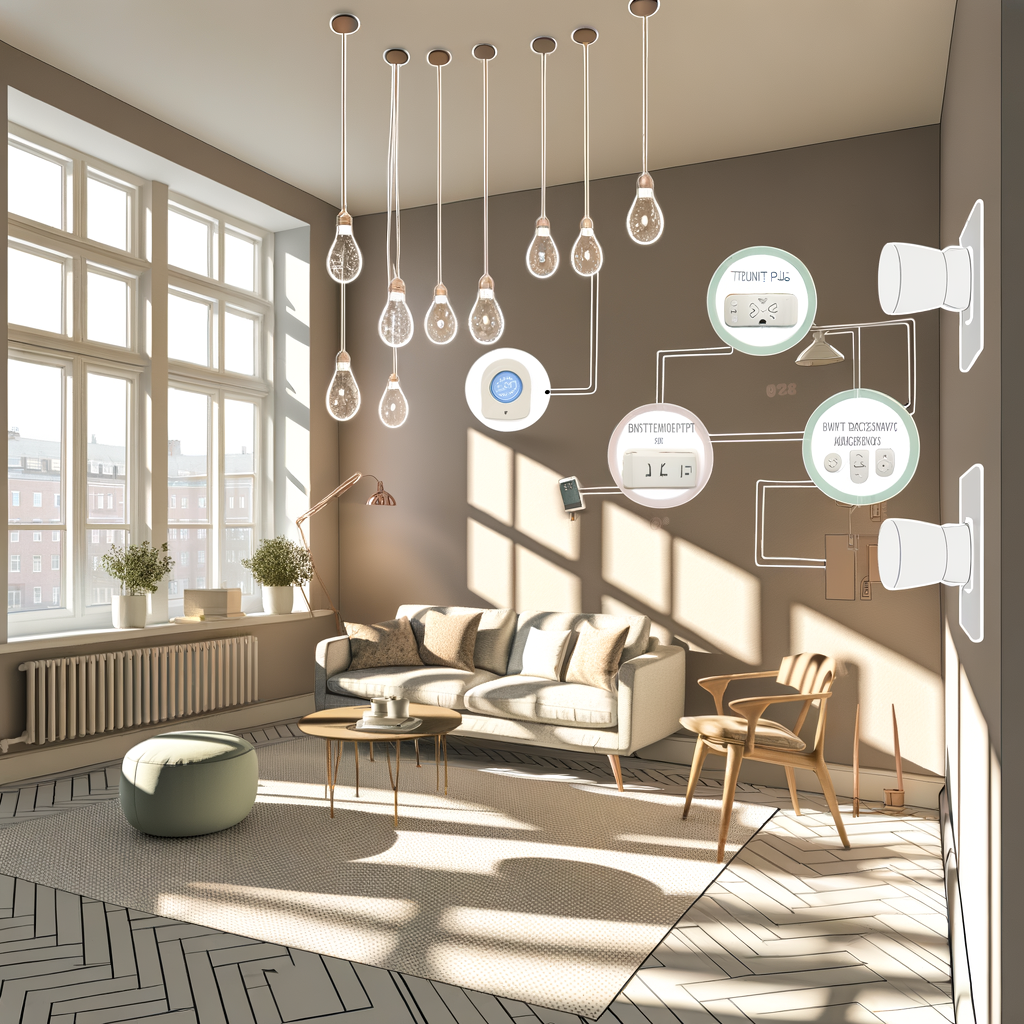The long, sun-drenched days of summer are finally here! But along with picnics and patio season comes a familiar sense of dread for many renters: the whir of the air conditioner and the inevitable spike in the monthly electricity bill. It can feel like an uncontrollable expense, a necessary evil to survive the heat. But what if you had a secret weapon in your fight for a cooler, greener, and more affordable summer? Good news: you do. It’s that often-ignored box in the basement, the utility closet, or on the side of your building—your electric meter. For renters, making big, energy-efficient upgrades like installing solar panels or new windows is usually off the table. This can leave us feeling powerless. However, learning how to read your electric meter is one of the most empowering, no-cost actions you can take. It transforms you from a passive consumer into an informed energy detective. It’s not about becoming an expert electrician; it’s about understanding your own habits and seeing, in near real-time, the impact of your choices. This simple skill can help you pinpoint “energy vampires,” slash your summer electricity bill, and significantly reduce your carbon footprint, all without a single call to your landlord. ### Why Bother Reading Your Meter? The Renter’s Payoff Before we dive into the “how,” let’s talk about the “why.” In our busy lives, taking time to hunt down and decipher a utility meter might seem like a chore. But the benefits are tangible and perfectly aligned with the eco-conscious renter’s mindset. * **Demystify Your Bill:** Ever look at your bill and wonder how the final number was calculated? Your meter holds the answer. By tracking your usage, you can predict your next bill and avoid that dreaded end-of-month shock. * **Identify Energy Hogs:** Is it the portable AC unit in the bedroom? The old TV you leave on for the dog? By taking readings before and after using a specific appliance, you can identify the biggest energy consumers in your apartment. * **Save Real Money:** Knowledge is power, and in this case, it’s also money. Once you see that running the dryer during a heatwave causes your meter to spin like a top, you’ll be more motivated to use that foldable drying rack. These small changes add up to significant savings. * **Reduce Your Carbon Footprint:** Every kilowatt-hour (kWh) you save is a direct reduction in the demand for electricity generation, which in many places still relies heavily on fossil fuels. Reading your meter is a hands-on way to connect your daily actions to your environmental values. * **Gain a Sense of Control:** Renting can sometimes feel like you have little control over your living space. Understanding and managing your energy consumption is a powerful way to take ownership and make your apartment a more sustainable home. ### Mission: Find Your Meter (No Special Gear Required) First things first, you need to locate your target. Electric meters are typically in common, accessible areas, but their location can vary wildly depending on your building type. **Common Hiding Spots:** * **Apartment Buildings:** Look in a designated utility room or closet, often in the basement or on the ground floor. You’ll likely see a “meter bank”—a wall of meters. Your task is to find the one assigned to your unit. * **Duplexes/Townhouses:** Check the exterior walls of your unit or a shared basement/utility area. * **Single-Family Rental Homes:** The meter is almost always on an outside wall, often near where the power lines connect to the house. **How to Identify YOUR Meter:** Don’t just pick one at random! You need to confirm it’s yours. Grab a copy of your most recent electric bill (or log into your online portal). Find the **meter number** listed on the bill. This unique serial number is also printed directly on the face of the physical meter. Match the number on your bill to the number on the meter, and you’ve found your match! Also, look for your apartment or unit number, which is often labeled nearby. **A Quick Safety Note:** Your job is simply to look and record. Never attempt to open, tamper with, or stick anything into a meter box. You’re a detective, not a demolition expert! ### How to Read Your Electric Meter: A Tale of Two Types Electric meters generally come in two flavors: the classic analog (dial) meter and the modern digital (smart) meter. Let’s break down how to read both. #### 1. The Analog (Dial) Meter: Reading the “Weird Clocks” This is the old-school version with several small, clock-like dials. It can look intimidating, but a simple set of rules makes it easy. **The Basics:** * You’ll typically see five dials. * You read them from **left to right**. * Pay close attention to the direction the numbers go on each dial. They alternate: one goes clockwise, the next goes counter-clockwise, and so on. There’s usually a small arrow indicating the direction. **Step-by-Step Instructions:** 1. **Start on the Far Left:** Look at the first dial. Note the number the pointer has just passed. **Always record the lower number.** For example, if the pointer is between 7 and 8, you write down 7. The only exception is if the pointer is between 9 and 0; in this case, 0 represents 10, so you would write down 9. 2. **Move to the Next Dial:** Read the second dial, remembering it will turn in the opposite direction of the first. Again, write down the number the pointer has just passed. 3. **The “Almost There” Rule:** Here’s the one tricky part. If a pointer is *directly on* a number (say, the 4), look at the dial to its immediate right. * If the dial to the right **has passed** 0, then you record the number the pointer is on (so, 4). * If the dial to the right **has not yet passed** 0, you must record the previous, lower number (in this case, 3). This is because the dial on the left doesn’t truly “click” over to the new number until the one on the right completes a full revolution. 4. **Repeat for All Dials:** Continue reading from left to right, applying these rules to all five dials. 5. **You’ve Got Your Reading!** The five numbers you’ve written down are your current meter reading in kilowatt-hours (kWh). For example, a reading might be 4-7-1-8-3, which means 47,183 kWh. The key with an analog meter isn’t the absolute number, but the *change over time*. To find your usage, you subtract the previous reading from the new one. (Reading 2 – Reading 1 = kWh used). #### 2. The Digital (Smart) Meter: Simple and Straightforward If you have a digital meter, your job is much easier! These have an LCD screen that displays the reading directly. **How to Read It:** * The screen will display a series of numbers, usually followed by “kWh” (kilowatt-hour), which is the unit of energy you are billed for. Simply write down this number. * Some smart meters cycle through several different displays (like the date, time, or demand readings). The kWh reading is the one you need. It’s often labeled as “01” or “Total” or will have “kWh” next to it. Just wait for the screen to cycle back to it if you miss it. **The Smart Meter Superpower: Time-of-Use (TOU) Rates** Many smart meters enable Time-of-Use (TOU) or “peak pricing” plans. This means the price of electricity changes depending on the time of day. It’s typically more expensive during “on-peak” hours (e.g., 4 PM – 9 PM on summer weekdays) and cheaper during “off-peak” hours (overnight, weekends). Your smart meter might display different readings for on-peak and off-peak usage. This is a game-changer for renters! By shifting energy-intensive tasks like doing laundry, running the dishwasher, or charging an electric scooter to off-peak hours, you can save money without reducing your overall energy use. Check your utility’s website to see if you’re on a TOU plan. ### Become a Summer Energy Detective: Your Action Plan Now that you can read your meter, it’s time to put that knowledge to work. The goal is to see how your habits affect your energy consumption. Grab a notebook or a notes app on your phone. **Step 1: Establish Your Baseline** For 3-4 days, read your meter at the same time each morning and each evening. This will give you a baseline for your typical daytime (higher usage) and nighttime (lower usage) consumption. **Step 2: Run Some Renter-Friendly Experiments** Now, test some variables. Try each of these for a full day and compare the day’s usage to your baseline. * **The AC Experiment:** The air conditioner is the biggest summer energy hog. * *Test:* Turn your thermostat up by 3-4 degrees from your usual setting. Use ceiling fans or a portable fan to help you feel cool. * *Check:* Compare the 24-hour usage. You’ll likely be shocked at how much you save. This can motivate you to find a slightly warmer “sweet spot” on the thermostat or rely more on fans. * **The Phantom Load Hunt:** “Phantom load” or “vampire power” is the energy used by electronics when they are turned off but still plugged in. * *Test:* Before bed, do a sweep of your apartment and unplug everything that isn’t essential: the TV, coffee maker, computer, phone chargers (once your phone is full), game consoles, etc. * *Check:* Compare your overnight meter reading to a normal night. The difference is pure energy waste you can eliminate for free every single night. Using a power strip with an on/off switch makes this much easier. * **The Big Appliance Test:** * *Test:* Want to see how much energy your ancient apartment-provided dryer uses? Take a meter reading right before you run a load and another one right after. * *Check:* The difference is the cost of that one cycle. Maybe that collapsible drying rack in your closet starts to look a lot more appealing for everything but the absolute essentials. ### Beyond the Meter: Your Utility Portal Is Your Best Friend The ultimate renter-friendly tool is often the one you already have access to: your utility company’s online account portal or mobile app. If you have a smart meter, your utility is likely collecting hourly or even 15-minute data from it. Log in and look for a section on “Usage” or “My Energy.” You can often see beautiful graphs of your daily and hourly consumption. This data is even more powerful than manual readings because it can show you *exactly* when your energy use spikes. You can see the moment the AC kicks on or when you started cooking dinner. It’s the ultimate tool for connecting your actions to your energy bill. By combining what you learn from your utility portal with your own manual meter-reading experiments, you’ll have a complete picture of your energy life. You’ll be equipped to make smart, simple, and effective changes that will lead to a more sustainable and affordable summer in your rental. So go ahead—find that meter. Your wallet and the planet will thank you.
Beat the Heat & Your Bill: A Renter’s Guide to Reading Your Electric Meter This Summer




